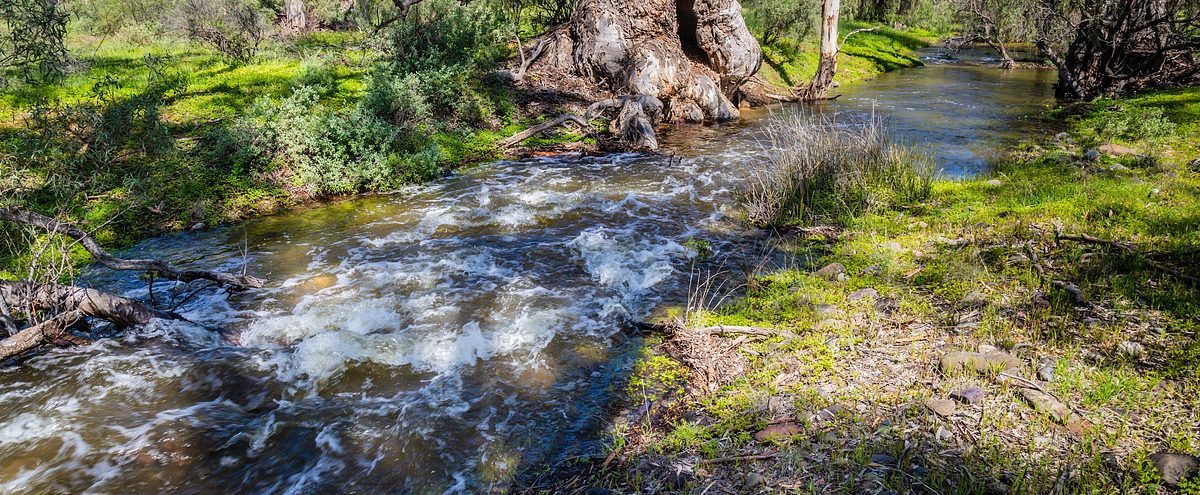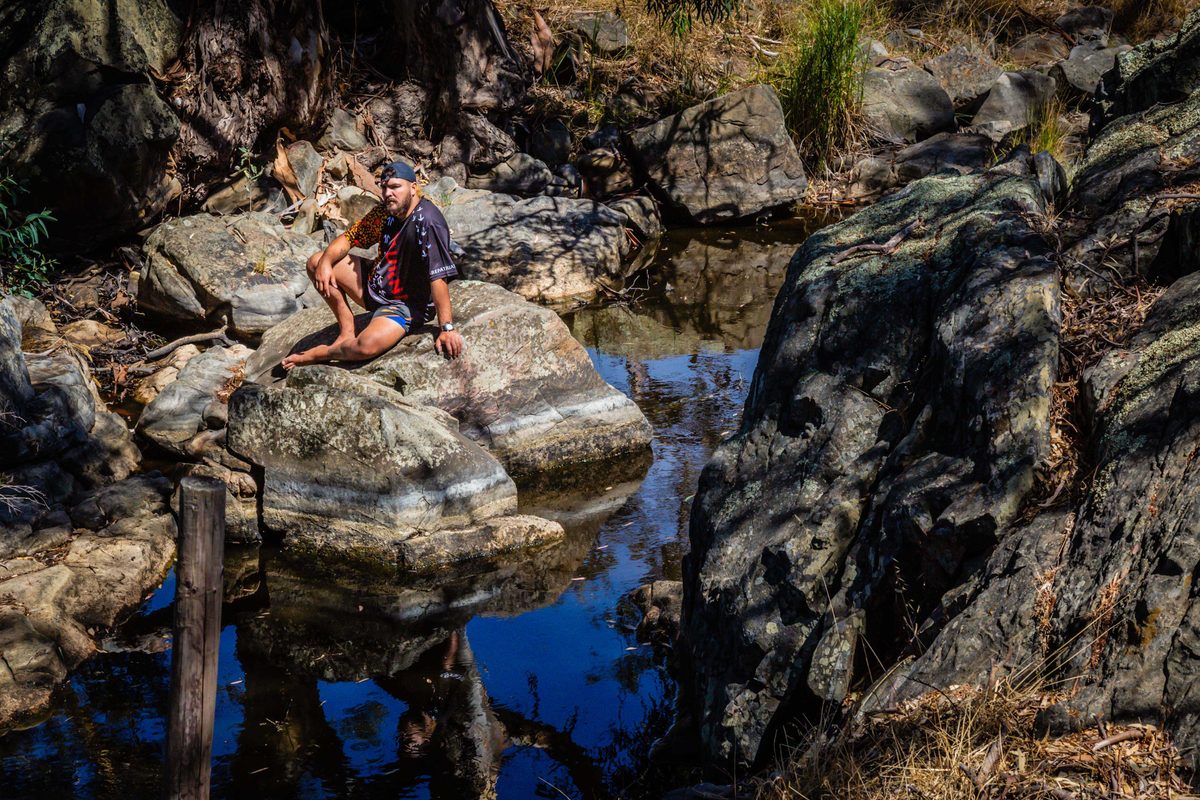
Environmental and Cultural Flows
The Environmental and Cultural Flows project aims to restore flows in three priority catchment areas in the Northern and Yorke region - Baroota, Beetaloo (Crystal Brook) and Barossa. Increasing pressure from resource use and climate change is impacting the health of the environment within these areas.
This project provides an opportunity to restore environmental and cultural flows to these systems to bring back ecosystem health in collaboration with First Nations, landholders and government agencies.
It builds on previous work to deliver environmental water releases from Beetaloo Reservoir in 2021 and 2022, and Baroota Reservoir in 2022. In the Barossa, the project aims to address key issues and recommendations identified during consultation on water management as part of the Water Security Strategy and the amendment of the Barossa Water Allocation Plan.
Project update
View a snapshot of the latest project activities:
Nov 2025: Annual health check of river red gums
Autumn and spring 2025: Ongoing monitoring of permanent pools in the Barossa
Apr 2025: Drone imagery and groundwater surveys paint picture of waterways
Mar 2025: Fish surveys of Barossa waterways
Nov 2024: Annual health check of river red gums
Spring 2024: Drone imagery and groundwater surveys during the Baroota water release
Autumn and spring 2024: Ongoing monitoring of permanent pools in the Barossa
Aug-Sep 2024: Water releases delivered from Baroota and Beetaloo reservoirs
Apr 2024: Drone imagery and groundwater surveys paint picture of waterways
Mar 2024: Fish surveys reveal alien species dominate Barossa waterways
Nov 2023: Annual health check of river red gums
Oct 2023: Citizen scientists look for water bugs in Barossa BioBlitz
Sep 2023: Ongoing testing of permanent pools in the Barossa
Aug 2023: Collaboration at heart of Environmental and Cultural Flows project
Jul 2023: Fish, frogs and all things water up for discussion with landholders
What is an environmental flow?
Environmental flows involve the use of water resources to support the health and condition of water-dependent ecosystems, including the plants and animals, and the people that rely on them.
What is a cultural flow?
Cultural flows, or cultural water, are the water resources and water condition determined by First Nations that is required to sustain and benefit their spiritual, cultural, environmental and economic needs.

The project's achievements:
- Restored flows to the catchment areas through scheduled water releases
- Increased knowledge of the flow regime requirements of water-dependent ecosystems
- Increased knowledge of surface water and ground-water interactions
- Supported First Nations access to important cultural sites and involvement in monitoring
- Supported community involvement and increased knowledge in the importance of restoring flow regimes
Key project outcomes:
- Development of a draft framework for a Barossa Environmental Water Strategy
- Identified the current riparian health of each catchment through monitoring activities
- Identified the flow regime characteristics (e.g. volume, season) needed to meet environmental requirements and cultural obligations in all three focus areas
- Developed and implemented managed reservoir water release programs to deliver environmental and cultural outcomes
- Delivered increased flows and improved flow regimes to support environmental and cultural outcomes
- Facilitated the involvement of First Nations communities in the delivery of project activities, providing opportunities for training and employment in monitoring activities. Also, in collaboration with landholders, enable visits to cultural sites and restoration and areas of cultural value and significance.
Lead agency
Northern and Yorke Landscape Board
Funding partners
This project is funded through the Landscape Priorities Fund. It is funded from landscape levies collected by Green Adelaide in the Adelaide metropolitan area that are redistributed to South Australia’s regional landscape boards.
Project partners
- First Nations - Nukunu, Ngadjuri, Peramangk and Kaurna
- Flinders University
- Department of Environment and Water
- SA Water
- Riverwater Life Pty Ltd
- Barossa Australia
- Barossa Improved Grazing Group
- Regional Development Australia – Barossa Gawler Light Adelaide Plains
- Barossa Council
- Light Regional Council
- District Council of Mt Remarkable
- Port Pirie Regional Council
Related links
- Baroota and Baroota water releases
- Fact sheet: River red gum response to Beetaloo environmental water release
- Fact sheet: Surface water data to steer future Beetaloo Reservoir water releases
- Fact sheet: Groundwater benefits from Beetaloo Reservoir water releases
- Fact sheet: Understanding fish communities of the Barossa 2025 - Mid to Lower North Para River
- Fact Sheet: Understanding fish communities of the Barossa 2025 - Upper to Mid North Para River (Flaxman Valley)
- News: Nukunu welcome Baroota water release for gum tree health